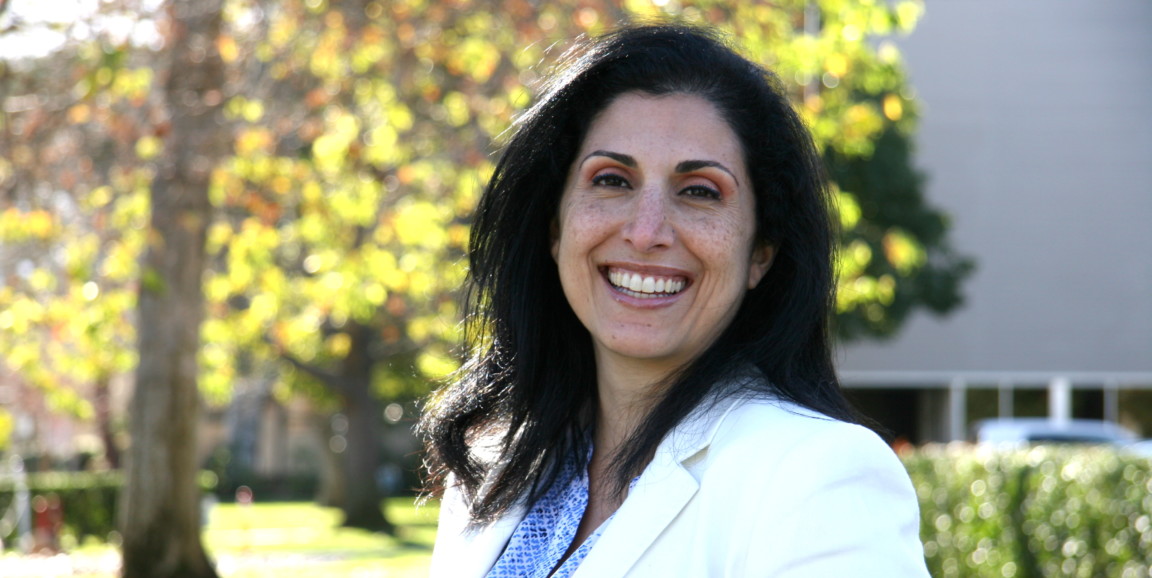Laleh Gharahbaghian, MD, came to Stanford in 2007 for her fellowship in emergency ultrasound and liked it so much she hasn't left. She's passionate about optimizing emergency quality care, particularly by using her "bedside ultrasound" skills. I spoke with her to learn more.
How did you first get interested in ultrasound?
It takes just one case to make you a believer. When I was an intern in emergency medicine at the University of California, Irvine, I had a case where there was a young girl who was having severe abdominal pain. I brought the laptop-style ultrasound machine over and saw a whole bunch of black free fluid, which was abnormal -- it was either from trauma, a ruptured hemorrhagic cyst or a ruptured ectopic pregnancy -- all conditions that need urgent treatment.
I knew to immediately start measures to prepare if she got worse... then her heart rate and blood pressure began to get scary. We almost lost her in the elevator on the way to surgery.
Patients can get very sick, very quickly in emergency care. They don't always present with the textbook signs and symptoms. Our job is to think of and diagnose emergent conditions. That case, if it was a few minutes later, or if I didn't use the ultrasound, I don't know what would have happened to her. Bedside ultrasound can save a life.
I understand you started an ultrasound blog as well. What inspired you to take that step?
I feel like everyone should have access to the knowledge of how ultrasound can impact patient care. The blog, SonoSpot, highlights exactly that, and is used for teaching any health care provider with links to other free ultrasound educational websites. It's fun to open it during a teaching session in the ER and discuss how patients' care can be optimized by ultrasound.
The site gets 500,000 hits per year from all over the world, with physicians contacting me to ask how they can learn more, or to say how their use of ultrasound helped their patients.
What attracted you to emergency medicine?
I wanted to be the doctor when someone needed one the most. When there was a code blue, I would hope I was the first one there to control that resuscitation.
I loved not knowing what would come through the door, but being prepared for anything, while treating everyone no matter their background -- anyone, anything, anytime.
What is your ultimate career goal?
Currently, I'm in a position where I can teach future physicians how to be great doctors. I am the medical director for the ER and part of a peer-reviewed quality process improvement system here at Stanford -- I've always wanted to do that.
I want to expand bedside ultrasound so that more physicians are using it for their patients. I would love for every single medical student to learn how to use ultrasound.
How do you unwind?
Emergency physicians are a work hard, play hard group. We see tragedy every single day and appreciate that life can change in an instant. I love to get together with close friends, try new restaurants and travel the world. I binge watch Netflix shows and love playing with my dog, Max.
Do you have any role models?
I have a few great role models. My mother is an incredibly strong person who doesn't sweat the small stuff, and is very forgiving and loves life.
I work with people who have changed the way we provide health care and they have taught me how perseverance and a patient-centered approach always wins.
Reading the stories of people who paved the way for women in medicine also inspires me, especially those who paved the way for emergency medicine to exist as a profession. It's one of the youngest specialties to exist.
I also learn a lot from future physicians. Their aspirations and determination keep me excited for what the future holds in medical care. We have mentees and mentors, and we learn from both to become better people.
Stars of Stanford Medicine features standout scholars in the School of Medicine.
Photo by Alyssa Tamboura




